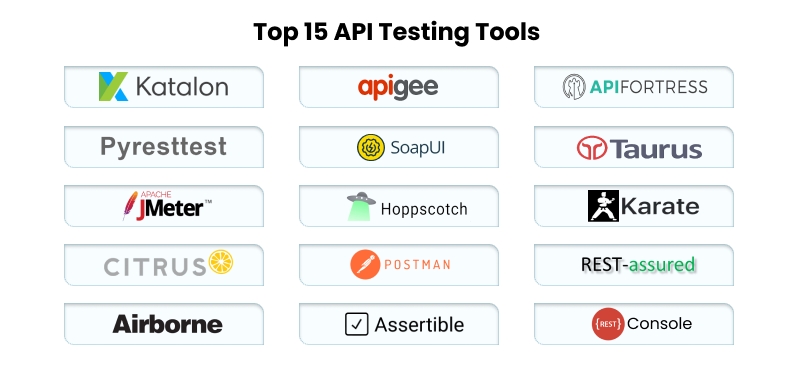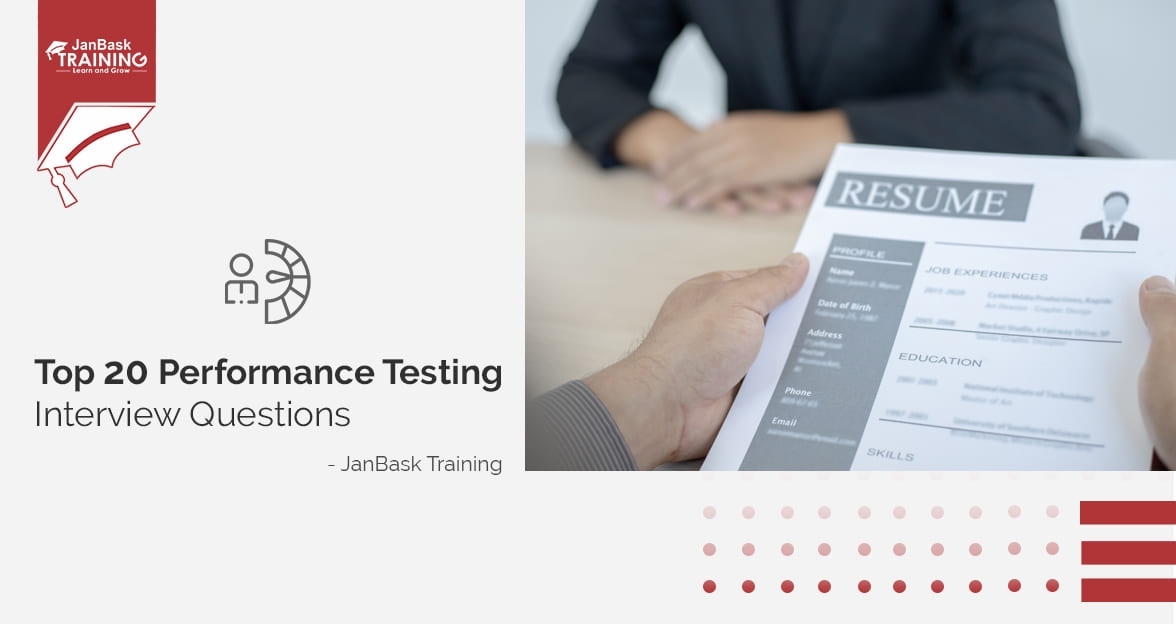 Grab Deal : Flat 30% off on live classes + 2 free self-paced courses - SCHEDULE CALL
Grab Deal : Flat 30% off on live classes + 2 free self-paced courses - SCHEDULE CALL

 Grab Deal : Flat 30% off on live classes + 2 free self-paced courses - SCHEDULE CALL
Grab Deal : Flat 30% off on live classes + 2 free self-paced courses - SCHEDULE CALL

That long-awaited email regarding your job interview for an API tester has finally reached you. Worried about the questions you might get asked? Looking for the most common API testing interview questions? Whether you are a fresher or experienced, we have prepared the list of the 51 most asked API testing questions to help you ace your interview. Once you clear your interview there is no stopping you from securing a job as Software QA tester.
QA Software Testing Training

Let us get started with your interview practice. Here are the basic api testing interview questions for freshers that you must begin with.
Ans:- API (Application Programming Interface) is a software intermediary that helps communication and data exchange between two software systems.
You can also give more information about the API examples such as Google Maps API, Youtube API, Twitter API, AmazonAdvertising API, and if you have previously worked on any.
Ans:- This question is among the API interview questions to check if you can efficiently frame your answer.
API testing tests the developed APIs to check their functionality, efficiency, reliability, and security.
You can mention types of API testing, such as
Ans:-
Ans:- An API, or Application Programming Interface, is a set of rules and protocols that allows one software application to interact with another. It defines the methods and data formats that applications can use to request and exchange information. APIs are crucial for enabling different software systems to work together, allowing developers to leverage functionality and data from other services, libraries, or platforms. Here's a high-level overview of how APIs work:
Ans:- Here is the list of common tests performed on APIs –
Ans:-These are the protocols used in API testing:
Ans:- There are numerous API testing tools available. Some of the tools are Postman, Katalon Studio, SoapUi, Apigee, JMeter, Parasoft SOAtest, Apigee, API Fortress, JUnit, etc.

Ans:- These are the points you can reply with
Ans:- In API Testing, we usually send a request to the API, and then we analyze the responses keeping the following parameters in mind:
Ans:- Test data is the input data used to perform test cases. This data can be prepared either manually or by using different tools. For example, to test the login functionality of an application, the input data will be username and password, which constitutes the test data.
Ans:- Test coverage is a metric used in software testing to measure the extent to which a set of test cases covers or exercises the various components, features, or code paths of a software application or system. It helps assess how thoroughly the testing process has examined the software and how much of the code has been tested.
Test coverage is a critical quality assurance measure because it helps identify areas of the code that have not been adequately tested. However, achieving 100% test coverage does not necessarily guarantee that the software is completely error-free or meets all requirements. It's essential to design meaningful test cases that cover critical scenarios, edge cases, and potential sources of defects.
Find everything it takes to follow a QA software tester career path and lead your life to a successful career.
Ans:- SOAP means Simple Object Access Control Protocol, an XML-based protocol used to exchange information between computer machines.
Ans:- Rest ( REpresentational State Transfer) API is defined as the set of functions that helps a developer send requests and receive responses. In this protocol, the interaction is always made through an HTTP protocol. The meaning of REST is Representable State Transfer, which has become a de facto standard for API creation.
Ans:- UI or User-Interface testing is used to check the graphical interface of an application or software program and how the user interacts and reacts to different elements like fonts, images, layouts, etc. This testing is majorly focused on the look and feel of an application.
At the same time, API enables communication among two different software components. Any software system implementing an API contains functions or subroutines that any other software system can execute.
|
API Testing |
Unit Testing |
|
Performed by QA team |
Performed by the development team |
|
This is a form of black-box testing |
This is a form of White box testing |
|
Full functionality of the software is checked as it will be used by external developers (The end-user) |
Here, each unit is tested for functionality. If each unit is performing well in isolation. |
|
The tester usually does not have access to the source code; only the functionality test is done. |
The developer has access to the unit test cases as they test these before they proceed to the next step. |
This will provide a basic overview of Unit testing and Api testing. You can learn in detail about unit testing with the help of unit testing online tutorials on them.
Ans:-The API documentation is technical writing giving instructions on how to use and integrate with an API efficiently. It references the information needed to work with the API and helps you get API testing questions.
Ans:- Here is the list of major areas you should focus on while writing an API document –
Ans:- Syntax – Here, you have to write the syntax for the parameter of the code in the same sequence as they occur, highlight necessary elements, optional elements, etc.
Ans:- For Java Code, you can use JavaDoc, and for the .Net code, you can use Doxygen.
Ans:-
|
API |
Web Services |
|
All APIs are not web services |
All web services are APIs |
|
All APIs need not be exposed over the web(i.e. HTTP) |
All web services need to be exposed over the web(HTTP) |
|
API uses multiple ways for communication e.g. DLL files in C/C++, Jar files/ RMI in java, Interrupts in Linux kernel API, etc |
A Web service uses only three styles of use: REST, SOAP, and XML-RPC for communication |
|
A Web services are network dependent |
APIs don’t need a network for operation |
As you are now aware of the API interview questions asked for freshers, Now let’s move towards the advanced API interview questions. Get prepared for all the API interview questions, You never know.

Here are the api testing interview questions for experienced that you should prepare while appearing for the senior profiles. These API testing interview questions are asked mostly to test your knowledge and experience, so try to flaunt your experience here to impress the interviewer.
Ans:- Here are the basic steps to follow to test an API –
Follow these steps in the same sequence as given, this is easy to test an API successfully.
Ans:- These are the errors you can tell to let them know that you have performed such tests before and know what you claim.
Ans:- You can always talk about your challenges while API testing or the list can go like this.
Ans:- Setting up an API environment is not easy, so try to share your experience and communicate with the interviewer.
The test environment of API is a bit complete and requires the configuration of both the database and server to be done without the integration of GUI.
After installation, the API is verified for the right operation. Throughout the process, we study the test process by setting up the API with different parameters.
Ans:- It is one of the API design interview questions. You can answer it like this:
The seven principles of API test design are listed below.
Ans:- Black Box Testing is a software testing method where the testers evaluate the application's functionality without peering into the internal source code. This method can be applied in every level of software testing, such as integration, unit, system, and acceptance.
Ans:- There is no need to give an introduction to the API Framework as it is self-explanatory. When you are testing APIs, you don’t have to work on each API independently, but you can use config files in that case where details for all APIs are given and can be used if needed.
Ans:- API builder is a PL SQL program that is made up of four SQL files where one file is responsible for starting the process, two files are used to create the temp tables or the master package, and the fourth file will help in generating the final output.
Ans:- Test API is a set of test APIs or a library of utility that helps developers, or testers create testing tools and automated test cases for .Net or WIN 32 applications. It also offers a set of basic building blocks, data structures, data types, algorithms, etc.
Curious about the salary for entry-level or Sr software test engineer? There are plenty of sources you can find the lucrative salary figures earned by professionals.
Ans:- For testing API security during API testing, we need to validate 2 things:
We can also check whether the TLS or the SSL certificate used over the HTTPS protocol is valid.
Ans:- Input injection is a popular act of simulating user inputs, and it can be done in popular ways as listed below –
Ans:- Run Scope is a web application that supports backend services and easy to understanding user interface tool for testing APIs.
Ans:- The major principles include – Setup, Execution, Verification, Reporting, Clean up, etc.
Ans:- The automation tools frequently used for API test automation include – JUnit for Java, SOAP UI, HP UFT, or NUnit for .NET, etc.
Ans:- Caching is a mechanism to improve the performance of applications. It is a process of storing and accessing data from a cache. A cache can be defined as a software or hardware component intended to store data so that future requests for the same data can be retrieved faster. e XML, like the SMTP server or POP3 protocol, to pass the messages or reply to queries.
Ans:- There are numerous API documentation templates available to make the entire process simple and straightforward.
These are 7 rest assured API automation testing interview questions and answers to give you knowledge of REST assured, RESTful web services, URI, and the types of HTTP methods. You can face such API testing questions too.
Ans:- REST Assured is a Java-based library that is used for RESTful API testing. It can be used to test applications based on JSON and XML. Also, all methods are entirely supported, including PUT, POST, GET, PATCH, and DELETE.
Ans:- Restful web services are REST Architecture-based Web services. RESTful web services use HTTP as a communication between the server and the client.
Ans:- URI (Uniform Resource Identifier) consists of the base URL, path parameter, and query parameter.
Ans:- You definitely should remember these HTTP methods before they appear in API testing interview questions.
Ans:- Payload/body is highly secured input data that is sent to API to process the request. The payload is usually in JSON format in REST API.

Ans. The main difference between PUT and POST is PUT requests are idempotent. Calling the same PUT request multiple times will always result in the same result. In contrast, calling a POST request repeatedly has the side effect of creating the same resource multiple times.
Ans:- The PUT and POST method is used to create a resource. GET is only used to request resources.
Get the Knowledge of SOAP to be able to answer any SOAP-related questions swiftly. We have curated some of the important questions one might face in the interview.
Ans:- The SOAP (Simple Object Access Protocol) is defined as an XML-based method used in web services. It is both platform and language independent.It is well known for designing and developing web services. It also enables the communication between applications developed on different platforms using various programming languages over the Internet.
Ans:- SOAP provides a user interface that can be accessed by the client’s server object, and the request sent by it goes to the server, which can be accessed using the server object. The user interface creates some files or methods consisting of server objects and the name of the interface to the server object.
It also contains other information, such as the name of the interface and methods. It uses HTTP to send the XML to the server using the POST method, which analyzes the method and sends the result to the client.
The server creates more XML consisting of responses to the request of the user interface using HTTP. The client can use any approach to send the XML, like the SMTP server or POP3 protocol to pass the messages or reply to queries.
Ans:- These are some basic syntax rules for an SOAP message
Ans:-
Ans:- It is an ordinary XML document that contains the elements as a SOAP message
Ans:- The major difficulty faced by users using SOAP is a firewall security mechanism. This locks all the ports leaving some like HTTP port 80 used by SOAP that bypasses the firewall.
The major technical issue with SOAP is it mixes specifications of message transport and message structure.
These are some of the interview questions on api testing you must prepare before the interviews and can find many api testing interview questions pdf to help you out in your preparation.
And did you know that demand for QA testers is expected to grow 25% in next 10 years? You should definitely check out top 122+ QA testing interview question and answers which will help you in acing the interviews.
These API testing interview questions have been extracted from real-time interviews, and are found to be mostly asked. So, better prepare them with sheer dedication, attention, and confidence. For cracking these API testing interview questions, you should have practical knowledge when working with any technology and to help you get that, enroll in our automation testing training online.

Master Your QA Interview: Top QA Interview Questions & Answers

Top Performance Testing Interview Questions

Top QTP Interview Question and Answers

Cyber Security

QA

Salesforce

Business Analyst

MS SQL Server

Data Science

DevOps

Hadoop

Python

Artificial Intelligence

Machine Learning

Tableau
Download Syllabus
Get Complete Course Syllabus
Enroll For Demo Class
It will take less than a minute
Tutorials
Interviews
You must be logged in to post a comment